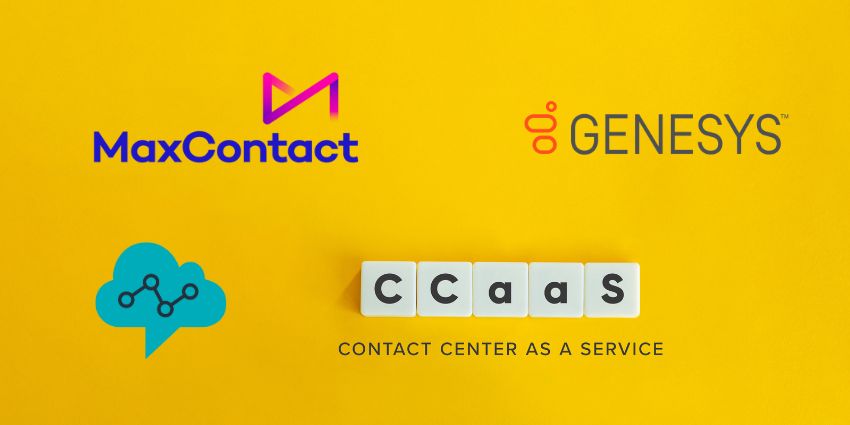Today, we’ll dive into the realm of customer orientation in contact centers and how to get this right with the right skills, training, and processes.
What Does it Mean to be Customer-Oriented?
Being customer-oriented means that the needs, wants, and satisfaction of customers are at the center of every decision and action taken by a contact center. It goes beyond only providing effective and adequate customer service — it’s about truly understanding and empathizing with each individual caller.
A customer-oriented contact center goes the extra mile to ensure that every interaction is personalized and tailored to meet the specific needs of the customer. It means actively listening, asking probing questions, and demonstrating genuine care in order to provide solutions that exceed expectations.
Customer orientation also involves being proactive rather than reactive – for example, reaching out proactively with updates or offering support before problems arise.
Traits and Skills for Customer Orientation
Agents play a major role in customer orientation. These frontline representatives – are your face and the voice – of the company, responsible for delivering exceptional customer service. To be truly customer-oriented, agents need to possess a specific set of traits and competencies:
- Product/service knowledge: In-depth understanding of the company’s products or services allow agents to offer accurate and relevant information to customers. It helps build trust and confidence in the customer-agent relationships.
- Multitasking: Contact center agents often handle multiple tasks simultaneously. Multitasking lets agents efficiently manage phone calls, respond to emails, and handle customer inquiries simultaneously without compromising the quality of service.
- Positive attitude: Maintaining a positive and friendly demeanor creates a pleasant experience for customers. Agents with a positive attitude can effectively handle difficult situations and leave a lasting positive impression.
- Attention to detail: Attention to detail is crucial when gathering and documenting customer data accurately. It ensures that agents have the necessary insights to offer personalized and relevant support.
- Cultural sensitivity: Contact center agents interact with customers from diverse cultural backgrounds. Being culturally sensitive helps agents understand and respect cultural differences, adapting their communication to meet customer expectations.
- Collaboration: Collaboration skills means that agents can work well within a team, share knowledge, and support colleagues. By collaborating, agents can access additional insights and resources to better assist customers.
- Resilience: Contact center agents face challenging situations regularly. Resilience helps them bounce back from setbacks, learn from difficult experiences, and gather the right resolve to deliver consistent customer-focused services.
- Proactive mindset: A proactive approach involves anticipating customer needs and providing assistance even before they ask for it. This proactive mindset helps agents deliver exceptional customer service and exceed expectations.
Key Components of a Customer-Oriented Contact Center Strategy
Companies looking to become more customer-oriented need to focus on:
1. Building the right culture
This component involves fostering the right pan-enterprise mindset – including leadership – that prioritizes customer delight. It requires instilling a customer-focused attitude across contact center personnel, from agents to managers.
2. Delivering seamless omnichannel
This means integrating various communication channels such as phone, email, chat, social media, and self-service options. Customers should have the flexibility to interact with the contact center using their preferred channels and expect consistent service across all touchpoints.
3. Personalizing and individualizing support
Customizing support for individual customer needs is vital – agents should have access to comprehensive customer data and utilize it to provide personalized interactions and solutions. This includes understanding preferences, history, and previous interactions to enhance the overall experience.
4. Implementing continuous improvement and feedback loops
Regularly analyzing customer interactions and feedback helps identify areas for improvement in processes, training, and policies. Contact centers should have mechanisms in place to capture and analyze feedback and use it to drive improvements in service quality – ultimately, closing the loop.
5. Providing agent development and empowerment
This entails training programs that focus not only on technical skills but also on soft skills like empathy, active listening, and problem-solving. Empowering agents with decision-making authority also enables them to deliver exceptional customer service.
Amazon: A Great Example of a Customer-Oriented Contact Center
When it comes to exceptional customer service, one company stands out above the rest: Amazon. They’ve always set a high standard for delivering outstanding support, and Amazon’s contact center is known for its efficiency and effectiveness in resolving issues promptly.
One of its most notable practices is their relentless focus on continuous improvement. They constantly gather feedback from customers through surveys, reviews, and other channels to identify areas where they can enhance their services further.
Moreover, Amazon takes advantage of advanced technologies like artificial intelligence (AI) chatbots to automate certain tasks without sacrificing personalization or quality of service. This allows them to handle large volumes of inquiries efficiently while still offering a human touch whenever necessary.
Benefits of Customer-Orientation
Customer orientation is a surefire boost for your brand reputation.
When word gets out that your contact center goes above and beyond to meet customer needs, people will start talking about it in a positive way. By prioritizing the needs of your customers, you differentiate yourself from competitors who may be solely focused on profit margins or cost-cutting measures.
Moreover, being customer-oriented allows you to gain valuable insights into your customers’ preferences and pain points. By actively listening to their feedback and monitoring their interactions with agents, you can identify areas for improvement in your products or services.
Ultimately, its benefits are many – ranging from increased loyalty and referrals to better employee satisfaction – all contributing towards long-term success for any contact center.







